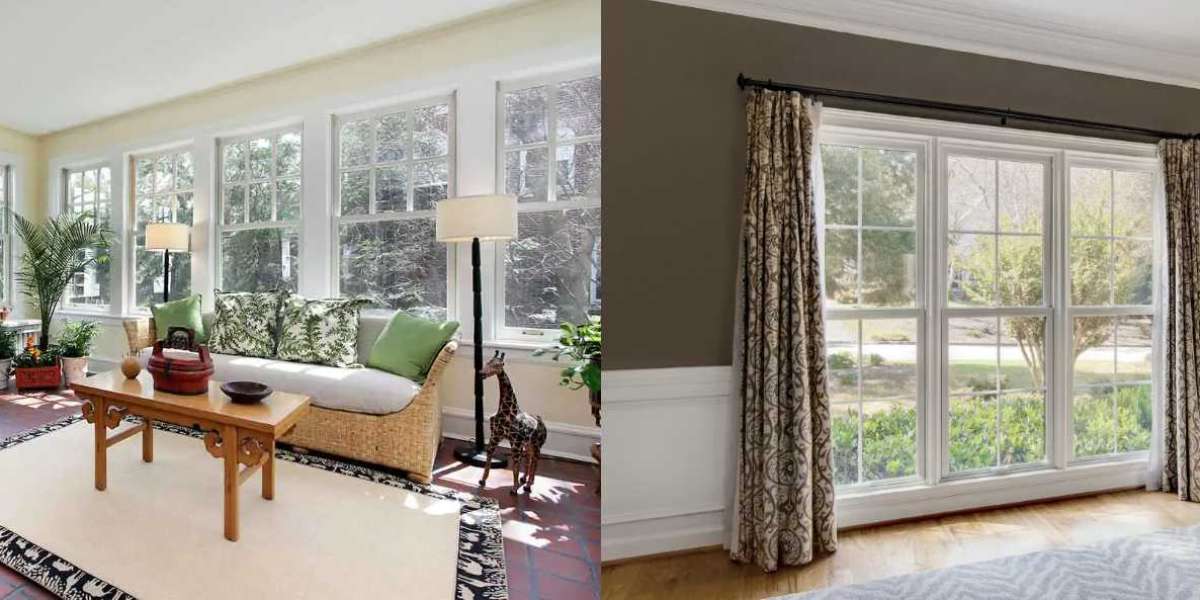When it comes to selecting the right windows for your home, style, functionality, and efficiency are key considerations. Among the many options available, **hung windows** stand out as a classic and versatile choice. Whether you’re remodeling your house or designing a new one, hung windows offer the perfect balance of practicality and aesthetic appeal.
What Are Hung Windows?
Hung windows are a traditional window style characterized by vertical sliding sashes. The sash is the movable part of the window that holds the glass and can be raised or lowered for ventilation. Hung windows are typically divided into two main types:
Single-Hung Windows
In single-hung windows, only the bottom sash is operable, meaning it can slide up and down while the top sash remains fixed. This style is commonly used in older homes and provides a straightforward, minimalist look.
Double-Hung Windows
Double-hung windows feature two operable sashes, allowing both the top and bottom sections to slide vertically.
Both single- and double-hung windows can be customized with various materials, finishes, and grid designs, making them a versatile choice for any home style.
Advantages of Hung Windows
Hung windows are a popular choice for a variety of reasons. Here’s what makes them a great option for homeowners:
Versatility in Design
Hung windows complement a wide range of architectural styles, from traditional to contemporary. Their clean lines and simple design make them a timeless addition to any home.
Ease of Operation
The vertical sliding mechanism in hung windows is easy to use and doesn’t require additional space for opening. This makes them ideal for areas where space is limited, such as near walkways or patios.
Enhanced Ventilation
Double-hung windows, in particular, provide superior ventilation options. By opening both sashes, you can create a natural flow of air—cool air enters through the bottom while warm air escapes through the top.
Low Maintenance
Modern hung windows often feature tilt-in sashes, which allow you to clean the exterior glass from inside your home. This makes maintenance much more convenient, especially for upper-story windows.
Energy Efficiency
Today’s hung windows are designed with energy efficiency in mind. Options like double-pane or triple-pane glass, low-emissivity (Low-E) coatings, and insulated frames help reduce heat transfer and lower energy bills.
Affordability
Compared to some other window styles, single-hung windows are often more cost-effective, making them an attractive choice for budget-conscious homeowners.
Choosing the Right Hung Windows
When selecting hung windows for your home, consider the following factors:
Material
Hung windows come in various materials, each with its advantages:
Vinyl: Affordable, low-maintenance, and energy-efficient.
Wood: Offers a classic look and natural insulation but requires regular maintenance.
Aluminum: Durable and lightweight, ideal for modern designs.
Fiberglass: Strong, energy-efficient, and resistant to warping or fading.
Choose a material that suits your budget, style preferences, and climate.
Size and Proportions
The size of your windows should match the scale of your home’s architecture. Larger windows can create a sense of openness and let in more natural light, while smaller windows provide a cozy, traditional feel.
Grid Patterns
Grid patterns, also known as muntins or grilles, can enhance the visual appeal of hung windows. Popular styles include:
- Colonial grids for a classic look.
- Prairie grids for a more contemporary design.
- No grids for a clean, modern appearance.
Choose a grid pattern that complements your home’s overall aesthetic.
Security Features
Modern hung windows often include features like reinforced locks, impact-resistant glass, and tamper-proof designs to enhance security and peace of mind.
Common Applications of Hung Windows
Hung windows are incredibly versatile and can be used in various parts of your home:
Living Rooms: Provide ample natural light and a clear view of the outdoors.
Bedrooms: Offer excellent ventilation while maintaining privacy.
Kitchens: Space-saving design makes them ideal for over countertops or sinks.
Bathrooms: Pair with frosted or textured glass for privacy and ventilation.
Maintaining Hung Windows
To keep your hung windows in top condition, follow these maintenance tips:
Regular Cleaning: Clean the glass, frame, and tracks to remove dust and debris.
Inspect Seals: Check for cracks or gaps in the weatherstripping and replace if necessary.
Lubricate Tracks: Ensure smooth operation by lubricating the sliding tracks occasionally.
Repaint or Refinish: If you have wooden windows, repaint or refinish them as needed to protect against weather damage.











